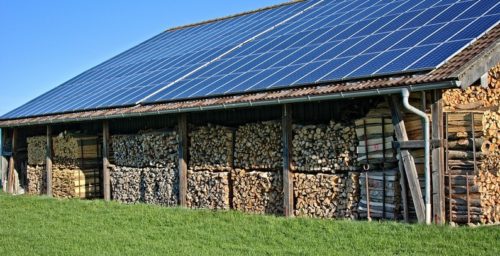
Photo: BGEN
Author: Toby D. Couture, Director of E3 Analytics
As the costs of solar power continue to decline around the world, solar power is now securing its place as not only the most abundant energy source in the world, but increasingly, as the least expensive. While many decision-makers around the world continue to think that solar is costly and impractical, this view is quickly becoming outdated as solar power continues to break records and global demand for the technology continues to grow. Recent auction results from Albania provide further confirmation of this trend, signaling that solar power has finally come of age.
As outdated views give way to new realities, new opportunities are emerging. This is particularly the case for countries throughout Southeastern Europe (SEE), where the solar potential far outstrips that of more northern countries like Germany, and Denmark.
EU continues to trail behind U.S., Australia
Thus far, most policies adopted in the SEE region to scale-up solar have focused on encouraging large, ground-mounted solar projects. However, as awareness grows of the social, economic, and job creation benefits of encouraging smaller-scale rooftop solar development, more and more countries are interested in harnessing their available potential.
And yet, compared to other leading markets like the U.S. and Australia, the EU continues to trail behind in a few key respects:
- There are few websites providing up-to-date information on policies and frameworks for rooftop solar; existing websites such as RES-Legal, for instance, barely even talk about self-consumption policies;
- The emergence of new business models in the self-consumption sector has been much slower than in both the U.S. and Australia, and is almost non-existent in many countries throughout the EU;
- Moreover, EU-wide discussion and knowledge sharing around prosumer policies is far more limited than in other policy areas (e.g. FITs and auction schemes, biomass, data collection, etc.)
Distribution companies across the region have been slow to respond
As solar power has come down in cost, a growing number of households and businesses ranging from farms, and hotels to manufacturing plants and supermarkets, notably in countries like Albania, Serbia, and Bosnia and Herzegovina, have started asking their utility companies if they can develop their own rooftop systems, and connect to the grid to export their surplus generation.
So far, distribution companies across the region have been slow to respond, citing a lack of familiarity with distributed generation technologies and concerns around variable renewable energy sources like solar. This is one clear area where further training and capacity building is needed.
Four key policy instruments
Broadly speaking there are four key policy instruments that governments and utilities can use to scale-up rooftop solar.
Some countries like Albania have already drafted Net Metering policies for rooftop solar, while others like Bosnia and Herzegovina are also in the process of exploring their options. The EU has also recently drafted new guidelines for policies governing rooftop solar, including guidelines for the compensation of net excess generation.
Growing trend away from classic Net Metering policies toward policies like NET-FITs
As the costs of solar PV systems continue to decline worldwide, there is a growing trend away from classic Net Metering policies toward policies like NET-FITs. Establishing policies that offer a clear cash payment for net excess generation can provide a number of benefits for utilities, for customers, and for society.
First, the purchase price can increasingly be set below the retail rate of electricity that customers pay, offering utilities access to a new, affordable source of power supply delivered directly within their distribution system. This distributed power supply can then be transported to neighbouring customers, help reduce line losses, and enable the utility to re-sell it to other customers for the full retail rate, earning an additional profit.

Second, in order to ensure compliance with future EU regulations, the NET-FIT rate can be linked to independent benchmarks such as the monthly average wholesale market price, or utilities’ avoided costs. This reduces the risk of overcompensation.
Third, providing a cash payment for net excess generation is critical to unlock financing. Without the possibility of a cash payment, it is difficult if not impossible in most countries to obtain financing from banks or traditional financial institutions. In such cases, banks will typically only lend on the basis of the creditworthiness of the proponent, not on the basis of the overall financial attractiveness of the project.
In order to unlock more financing, both from households and businesses, clear regulations enabling the purchase of customers’ net excess generation are needed.
Key decision points for policymakers
It is time for governments throughout the region to establish clear policy frameworks for rooftop solar and tap into their tremendous potential.
Key Decision Points for Policymakers:
- What is the rate for Net Excess Generation?
- Does the same rate apply both to self-consumption and exported generation?
- Which technologies are eligible?
- Which customer types are eligible?
- What are the project size categories?
- Is there a cap on the total allowable capacity?
- What is the length of the Net Metering (NM) agreement?
- Do existing projects qualify?
- Are there any additional charges or fees?
- Are any bill components “ring-fenced” (i.e. non-erasable through self-consumption)


















Be the first one to comment on this article.